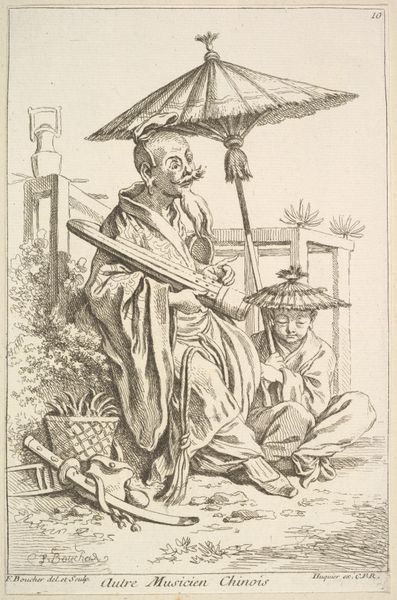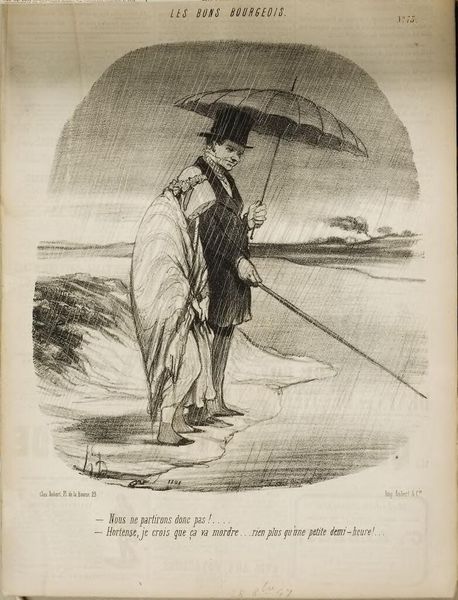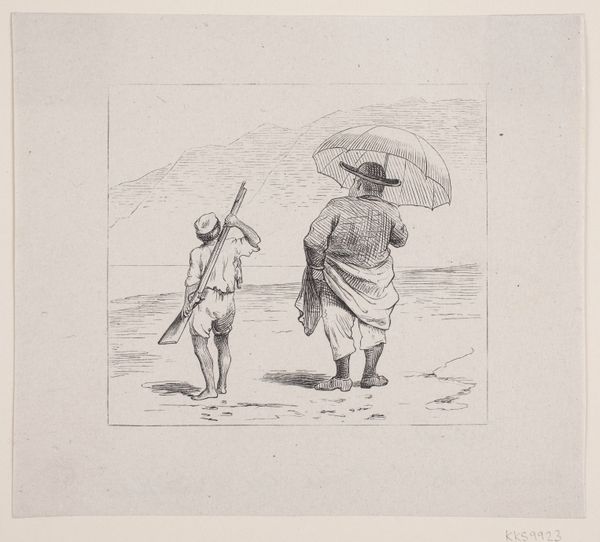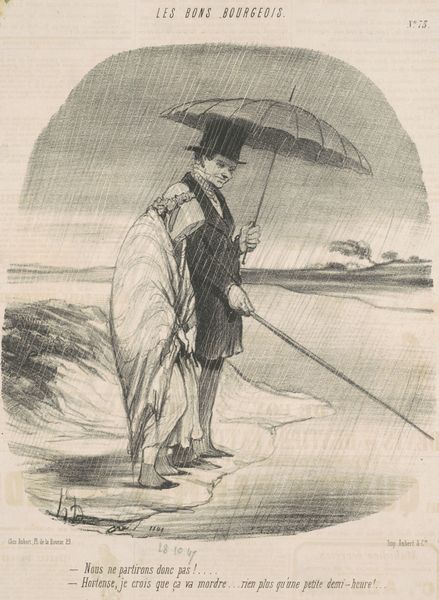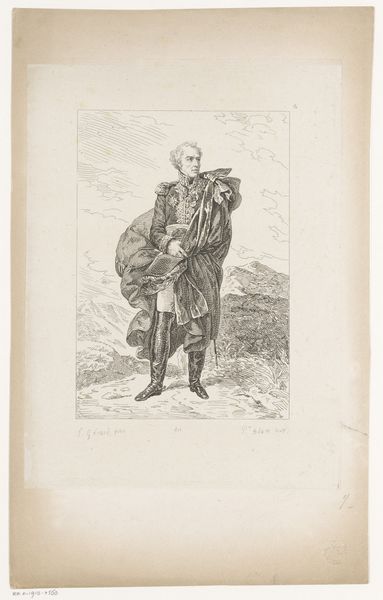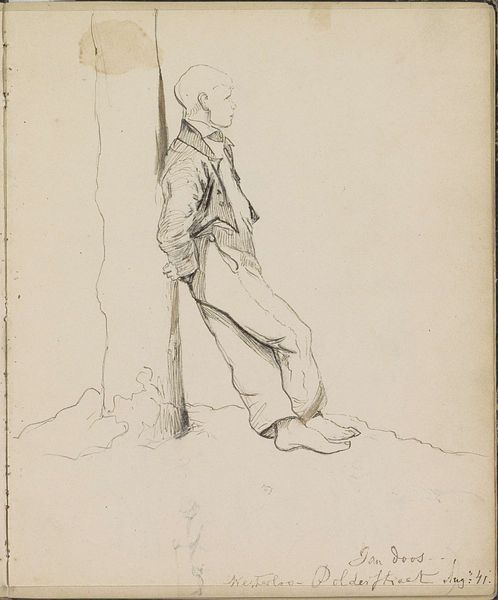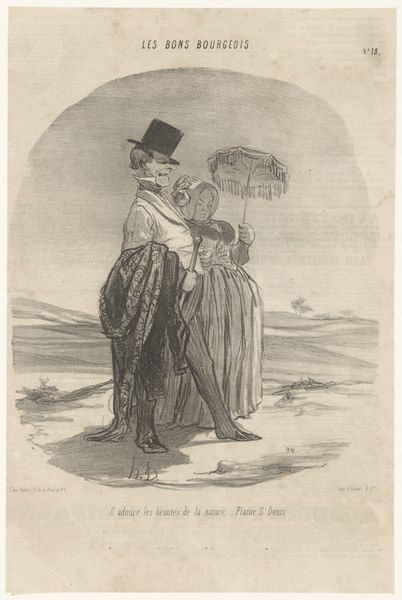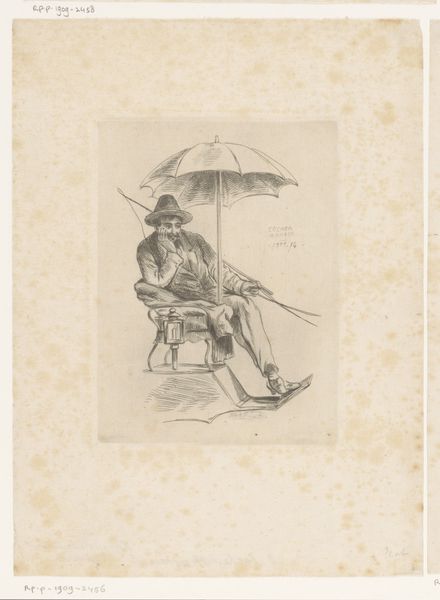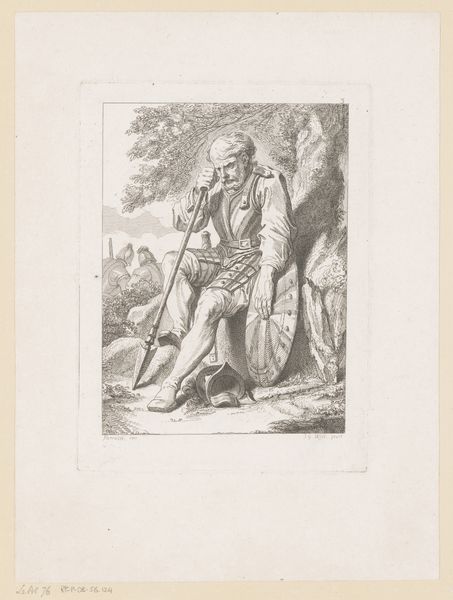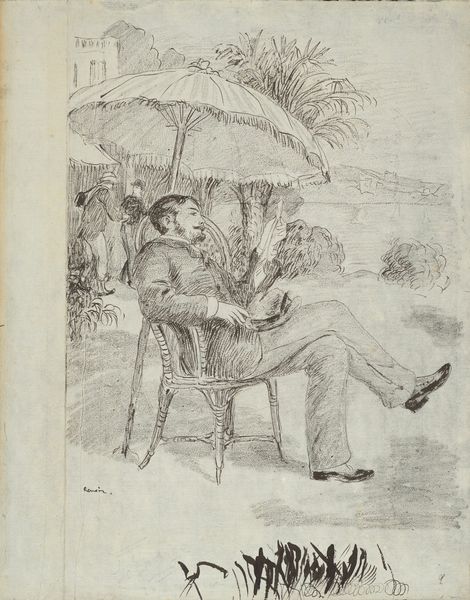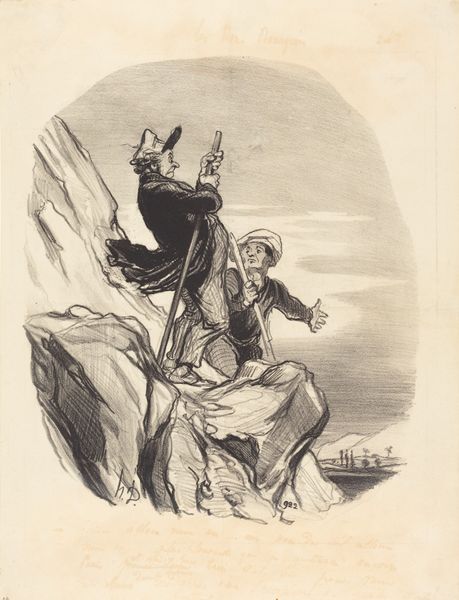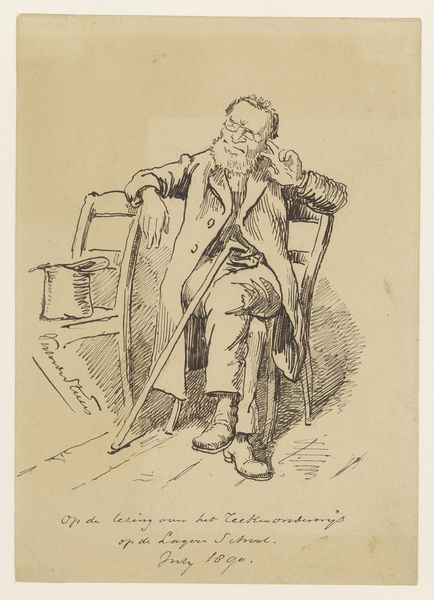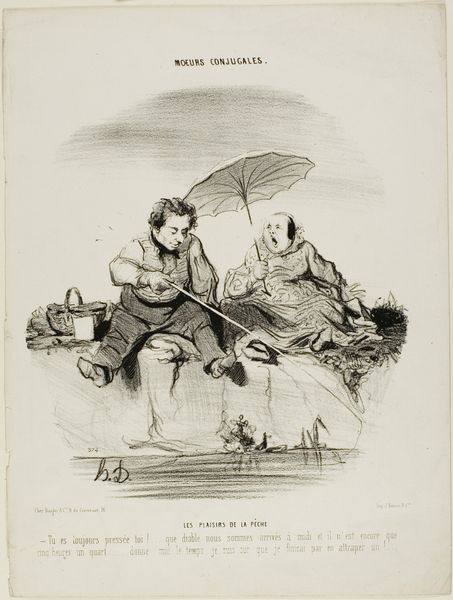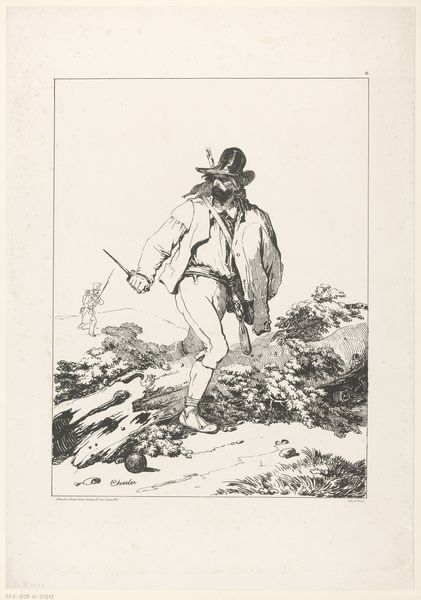
drawing, ink, pencil
#
portrait
#
drawing
#
pen sketch
#
pencil sketch
#
landscape
#
ink
#
pencil
Copyright: Public Domain
Curator: This intricate drawing is entitled "Direktor Weismann in Italien" by Johann Heinrich Hasselhorst. Notice how the artist uses ink and pencil to create this scene. What is your initial read? Editor: My first thought is how satirical the work seems. The man reading under the shade of an umbrella, the smiling sun above, and a snake slithering nearby all coalesce into an image that feels like commentary on the grand tour or leisure. Curator: Precisely! The use of line is fascinating. Consider how Hasselhorst employs hatching and cross-hatching to create depth and volume, particularly in the figure of Weismann and the drapery of his clothing. There's also an incredible economy of line in the landscape elements—a delicate volcano in the distance! Editor: It's interesting how the artist positions Weismann, a director perhaps of some institution, amidst symbols of Italy, ancient ruins and a volcano. Hasselhorst appears to position this authority figure in a landscape of cultural and natural significance, inviting reflections on the influence of place and perhaps even of societal position on scholarly pursuit. The work underscores how our reception to new surroundings are perceived through pre-established notions of self. Curator: A valid point. Semiotically speaking, each element contributes to the overall construction of meaning. The snake, for example, might symbolize danger, or temptation, or even the exoticism of a foreign land. It introduces an element of the uncanny. Consider as well, the comical depiction of the sun looking down upon the whole affair. It's not an unfeeling orb; its animation lends a peculiar aura to the scene, no? Editor: That leads to a rich understanding, doesn’t it? The piece shows how, through satire, art allows us to consider social roles and societal expectations when individuals interact with spaces historically loaded with prestige. Curator: Ultimately, this small drawing is a delightful example of how close observation and careful execution can yield a work of immense complexity. Editor: Agreed. Hasselhorst really provides a strong basis from which one can observe nineteenth-century society's dynamics through the lens of Italian landscapes and those occupying them.
Comments
No comments
Be the first to comment and join the conversation on the ultimate creative platform.
